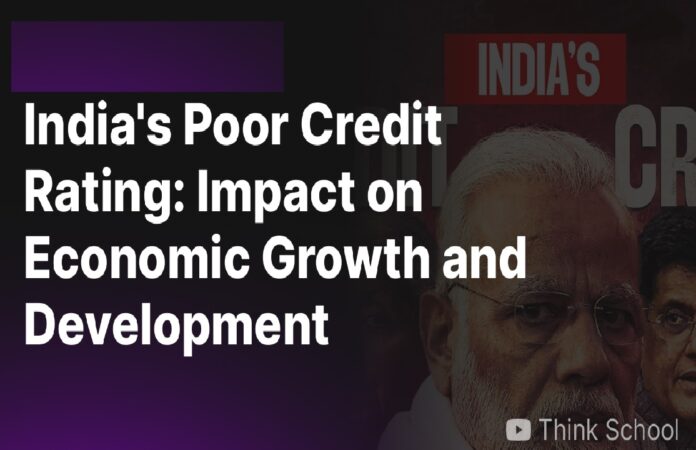( News Trust of India) : India’s economic rise has been nothing short of meteoric. As the world’s fastest-growing major economy, boasting a GDP expansion of 7% and a burgeoning startup ecosystem, it paints a picture of unparalleled dynamism. Yet, a seemingly incongruous reality simmers beneath the surface: India’s credit rating remains stubbornly perched at the cusp of investment grade, categorized as BBB- by S&P and Fitch, and Baa3 by Moody’s. This paradox begs a crucial question: why does India’s credit rating not mirror its economic prowess?
Unveiling the Fault Lines
Several intricate factors weave into the fabric of India’s credit rating conundrum. Let’s dissect the key elements:
1. Fiscal Consolidation Challenges: While India’s fiscal deficit has narrowed in recent years, it remains elevated compared to its regional peers. The government’s high debt-to-GDP ratio, currently exceeding 80%, raises concerns about its ability to meet future obligations, especially amidst volatile global economic conditions.
2. Persistent Current Account Deficit: India grapples with a widening current account deficit (CAD), reflecting its reliance on imported goods and services. This exposes the economy to external shocks and makes it vulnerable to fluctuations in foreign capital flows.
3. Informality’s Enigmatic Grip: A significant portion of India’s economy operates in the informal sector, characterized by limited formalization and tax compliance. This impedes transparent data collection and creates uncertainties for investors, impacting their risk perception.
4. Infrastructure Bottlenecks: Despite significant strides, India’s infrastructure lags behind its economic aspirations. Inadequate transportation networks, power grids, and logistics systems constrain growth potential and raise operational costs for businesses, denting investor confidence.
5. Geopolitical Tensions: The broader geopolitical landscape casts a shadow. Regional tensions and global uncertainties create risks for foreign investments, prompting investors to adopt a cautious approach towards emerging markets like India.
Nuances and Considerations
It’s crucial to recognize that credit ratings are not pronouncements of absolute truths, but rather forward-looking assessments based on current trends and perceived risks. Additionally, different rating agencies employ their own methodologies and weightage systems, leading to slight variations in their assessments.
Furthermore, India’s positive attributes often get overshadowed by the aforementioned challenges. Its large domestic market, young demographic dividend, and robust foreign exchange reserves offer immense potential for future growth. The government’s recent initiatives aimed at fiscal consolidation, infrastructure development, and financial inclusion are commendable steps in the right direction.
Navigating the Labyrinth
Upgrading India’s credit rating necessitates a multi-pronged approach:
- Sustained fiscal consolidation: Implementing credible fiscal consolidation plans, coupled with revenue-enhancing measures, is paramount to reducing the debt burden and bolstering investor confidence.
- Current account management: Narrowing the CAD through export promotion, import rationalization, and attracting foreign direct investments (FDI) is crucial for macroeconomic stability.
- Formalization drive: Encouraging formalization of the informal sector through policy incentives and streamlined regulations will broaden the tax base and enhance transparency.
- Infrastructure push: Accelerating infrastructure development across key sectors like energy, transportation, and logistics will improve operational efficiency and attract investments.
- Geopolitical prudence: Engaging in constructive dialogue and fostering regional stability will mitigate geopolitical risks and create a more conducive environment for foreign investments.



